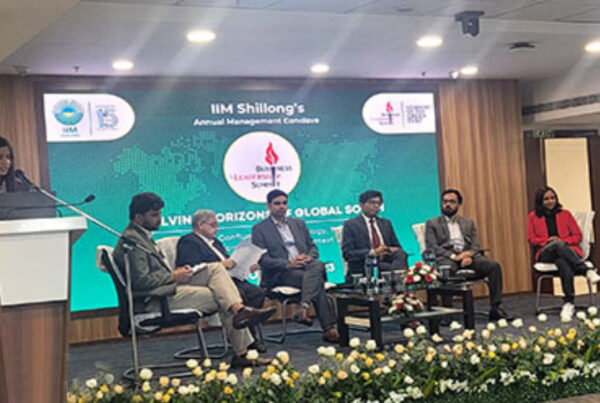Open Network for Digital Commerce – The Next Fintech Revolution!
India is dotted with close to12 million hyper-local kirana stores that account for 80% of the retail sector. Most of these are not digitally connected, as revealed in a strategy document pertaining to Open Network for Digital Commerce (ONDC) released earlier this year.
Providing an end-to-end e-commerce solution requires a significant investment; this leaves small retailers and MSMEs at the mercy of established e-commerce platforms for selling their products.
To address the restraint on small sellers, the Department of Industry and Internal Trade Promotion (DPIIT) launched the ONDC initiative. The aim is to facilitate the transition of small sellers/retailers from an operator-driven, monolithic, platform-centric model to a moderator-driven, interoperable, decentralized network. Introduced in April 2022 as a pilot project in five cities – Delhi NCR, Bangalore, Coimbatore, Bhopal, and Shillong – the plan is to cover 150 retailers in this phase.
ONDC is touted to be the next revolution in FinTech in India. The initiative, it is believed, will enable 500 (small companies) to become unicorns, instead of facilitating the growth of just one or two players into trillion-dollar companies.
ONDC seeks to bring inclusiveness and interoperability to supply chains, buyer universes, logistics, and technology services. It is expected to soon bring almost 6 crore small stores or convenience stores on one platform where consumers can see the goods.
Ecommerce Market size
According to India Brand Equity Foundation, Ministry of Commerce, e-commerce merchandise value, or the total value of all goods sold online in India, would reach US$350 billion by 2030 from about US$60 billion in 2021.
Market penetration of e-commerce in India is expected to touch19% by 2030.
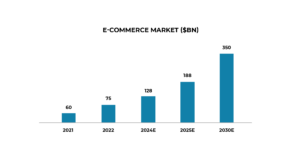
Current scenario
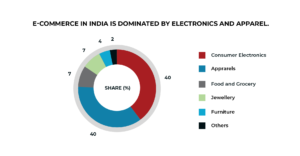
Food and grocery account for 68% of the retail market, indicating gaps in the e-commerce story.
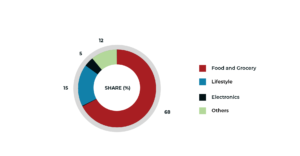 Amid COVID-19, India recorded significant growth in e-commerce; however, most of the benefits were garnered by bigger players such as Amazon and Walmart’s Flipkart that control over 60% of the market.
Amid COVID-19, India recorded significant growth in e-commerce; however, most of the benefits were garnered by bigger players such as Amazon and Walmart’s Flipkart that control over 60% of the market.
Currently, Amazon and Flipkart together account for over 60% share in the Indian e-commerce market.
Commerce equality: How ONDC differs from e-commerce
Traditional E-commerce Marketplace
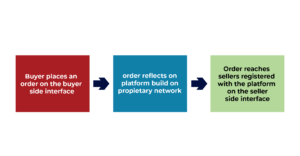
ONDC: Open Protocol Marketplace
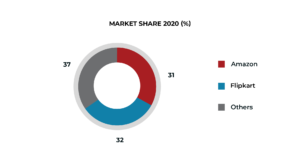
With ONDC, the fee could be 20-30% lower than the current rate charged for platforms.
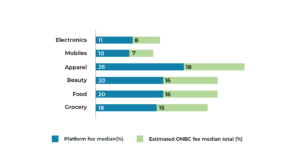
The network uses open specifications and protocols and is not tied to any platform; hence, buyers and sellers are not required to use the same platform to complete the transactions.
As long as the platform is connected to this open network, buyers and sellers can transact regardless of the application they use.
One can download the ONDC app of their choice (such as UPI) and use it to purchase specific products and services from any merchant that offers them. Delivery is via their logistics partners. ONDC is not just for retail. It aims to facilitate digital transactions between buyers and sellers of goods and services such as wholesale, mobility, food delivery, logistics, travel, and city services. It also covers business-to-business transactions.
As of now, only a handful of buyer-side and seller-side participants are live on ONDC.
Buyer side interface – Paytm
- Seller side interface – Digiit, eSamudaay, Gofrugal Technologies, Growth Falcons, and SellerApp offer
- Logistics for hyperlocal deliveries – Dunzo and Loadshare
Microsoft, Kotak, PhonePe, and Snapdeal are among the companies in the “advanced development stage,” according to the ONDC website, while Airtel, Axis Bank, HDFC Bank, India Post, and hundreds of other companies are working on integrating with the network.
Tech major Google and e-commerce giants Flipkart and Amazon are also considering integrating with the network. This will help in scaling up ONGC’s overall operation.
Challenges
Currently, ONDC is in the pilot phase, expected to be open to the public soon.
Several insights have been gathered from implementing the pilot project. One of these is that discounts and other offers play a key role in the popularity of any platform. By this parameter, Zomato fares better than ONDC, offering a better value proposition for customers.
Similarly, in the grocery category, ONDC lists most products by MRP and shipping rates. The same products are offered at a discounted price on quick commerce apps (Swiggy, Instamart, Dunzo), along with offers for free shipping for orders above a certain value.
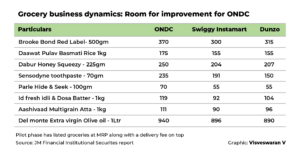
Another challenge for ONDC is that the existing e-commerce platforms are consumer-centric and, therefore, popular among customers. These platforms offer value-based services such as fulfillment of orders in time, no-questions-asked return policies, and consumer-friendly refunds and cancelations.
Conclusion
The ONDC initiative by the government is no doubt a significant step toward the democratization of e-commerce in India. However, it is still at an ascent stage with a lot of gray areas around aspects such as how does a seller stand to benefit by listing on the platform, what is the incentive for customers to shop on ONDC, how will sellers be listed on the platform, or what is the credibility of products and reliability of the delivery mechanism.
Little doubt then that addressing these key issues will decide the success of the platform. Considering that it has to contend with strong and well-entrenched competitors in the market, attention must be paid to make it as user-friendly as possible, including offering incentives to lure consumers; efficient in terms of supply/delivery; and safe/dependable.
For more information on our research services and consumer insights, please connect with Suyog Keluskar, Director, and Ashwini Chakre, Senior Analyst, at Avalon Global Research.



